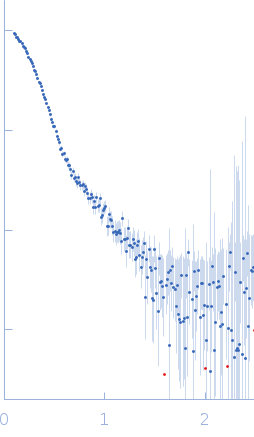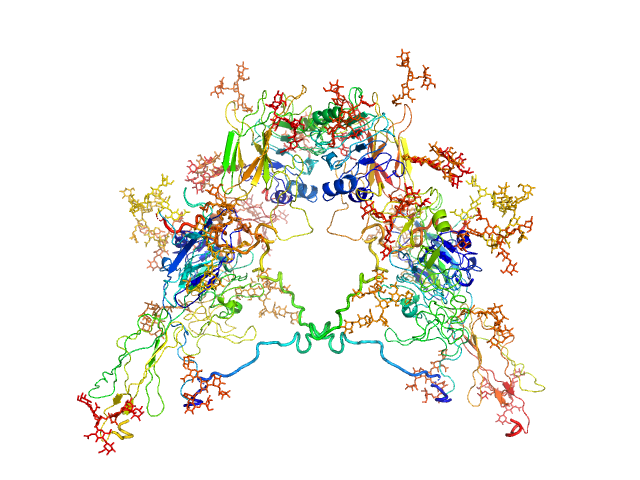|
X-ray scattering data from the from the human insulin receptor in 30 mM Tris 140mM NaCl 0.02% w/v azide pH 7.5 were collected on a Bruker Nanostar instrument at the Bragg Institute (Australian Nuclear Science and Technology Organisation, Lucas Heights, Australia) using a VÅNTEC-2000 detector (I(s) vs s, where s = 4π sin θ/λ and 2θ is the scattering angle; λ=0.15406 nm). Approximately 30 uL of a 2.0 mg/ml protein solution was loeaded into a quarz capilary mounted in a stainless steel holder. Two successive 1800 second frames were collected, and the buffer was collected in an analogous fashion. The data were normalized to the intensity of the transmitted beam, radially averaged, placed on an absolute scale against a water standard, and the scattering of the solvent-blank was subtracted. The models and corresponding fits include those derived from a rigid body model using BUNCH08.
Additional modelling information, including summaries for the related entry SASDHE2 (Type 1 insulin-like growth factor receptor ectodomains, IGF-1RΔβ), are provided in the full entry zip-archive.
|
|
 s, nm-1
s, nm-1
